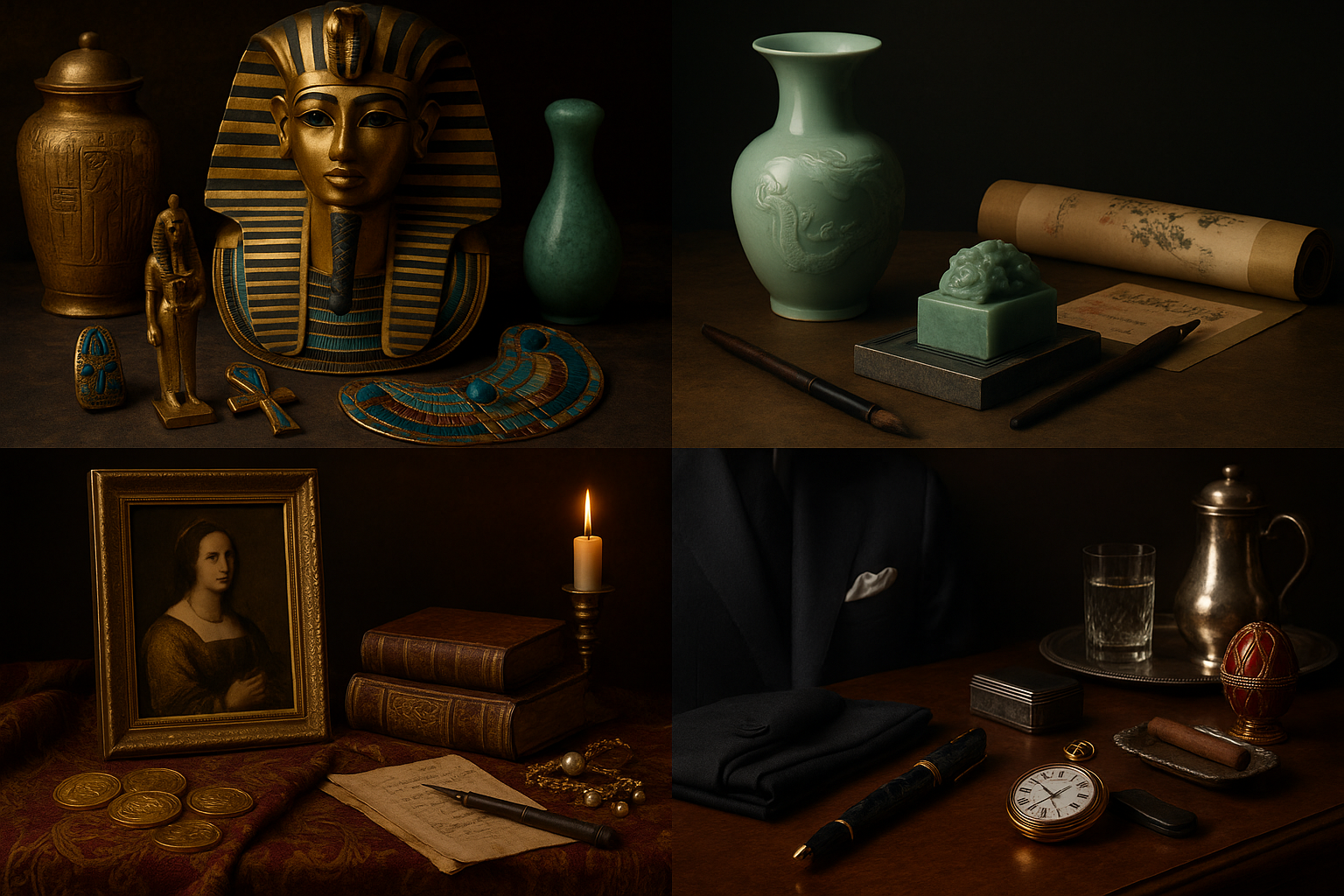Luxury Across Cultures: How Different Civilizations Define Prestige
– by Opulence, The Collection by LKL
⸻
Luxury isn't a modern invention — it's an ancient language. But what people consider "luxurious" has evolved dramatically across time, place, and power.
At Opulence, we believe luxury tells us what a culture values most — and why. Let's take a journey through time and explore how prestige was defined in four of the world's greatest civilizations.
⸻
Ancient Egypt: Luxury as Divine Connection
In ancient Egypt, luxury wasn't just material — it was spiritual.
• Gold was seen as the skin of the goods.
• Lapis lazuli and turquoise were more valuable than silver.
• High priests and royalty wore symbolic amulets, ankhs, and scarabs embedded with meaning.
• Artisans crafted intricate canopic jars, funerary masks, and even perfume cones for the elite.
Luxury reflected one's closeness to eternity, and only the elite were worthy of divine material.
⸻
Imperial China: Prestige in Harmony and Precision
In dynastic China, luxury meant balance, refinement, and control.
• Silk, once worth more than gold, became China's diplomatic currency.
• Porcelain — flawless, delicate, and painted with spiritual symbols — symbolized mastery.
• The nobility used jade seals, carved brushes, and inkstones — tools of scholarship and governance.
• Calligraphy was an art reserved for the wise and powerful.
Here, luxury was cultural and intellectual — not just ornate, but meaningful.
⸻
The European Renaissance: Power, Patronage, and Art
In Renaissance Europe, prestige came through patronage and visibility.
• Wealthy families like the Medici commissioned grand paintings, sculptures, and cathedrals to show influence.
• Gold coins with family crests were distributed to build reputation.
• Rare books, handwritten manuscripts, and custom writing instruments were considered elite.
• Wearing tailored garments, jewelry, and imported perfumes was a social signal of elevated status.
Luxury here was both visual spectacle and intellectual currency — a display of who you were and how you thought.
⸻
Modern Europe: Exclusivity and Craftsmanship
By the 19th and 20th centuries, luxury became about taste and discretion.
• Watches, fountain pens, cigars, silver tableware, and fine tailoring marked the elite.
• Brands like Montegrappa, Cartier, and Fabergé emerged to cater to the refined collector.
• Limited editions, artisan signatures, and numbered pieces became essential.
• A gentleman's desk or a lady's vanity was curated like a personal museum.
Prestige evolved into quiet excellence — no longer about gold walls, but rare details and timeless materials.
⸻
What Does Luxury Mean to You?
Today, luxury is a blend of all eras: timeless materials, cultural symbols, handcrafted quality, and personal story.
At Opulence, we don't just offer beautiful items — we offer pieces that reflect centuries of what humans have always craved:
Meaning, beauty, and legacy.

Share:
The Future of Collecting
How to Spot a Fake